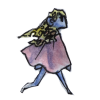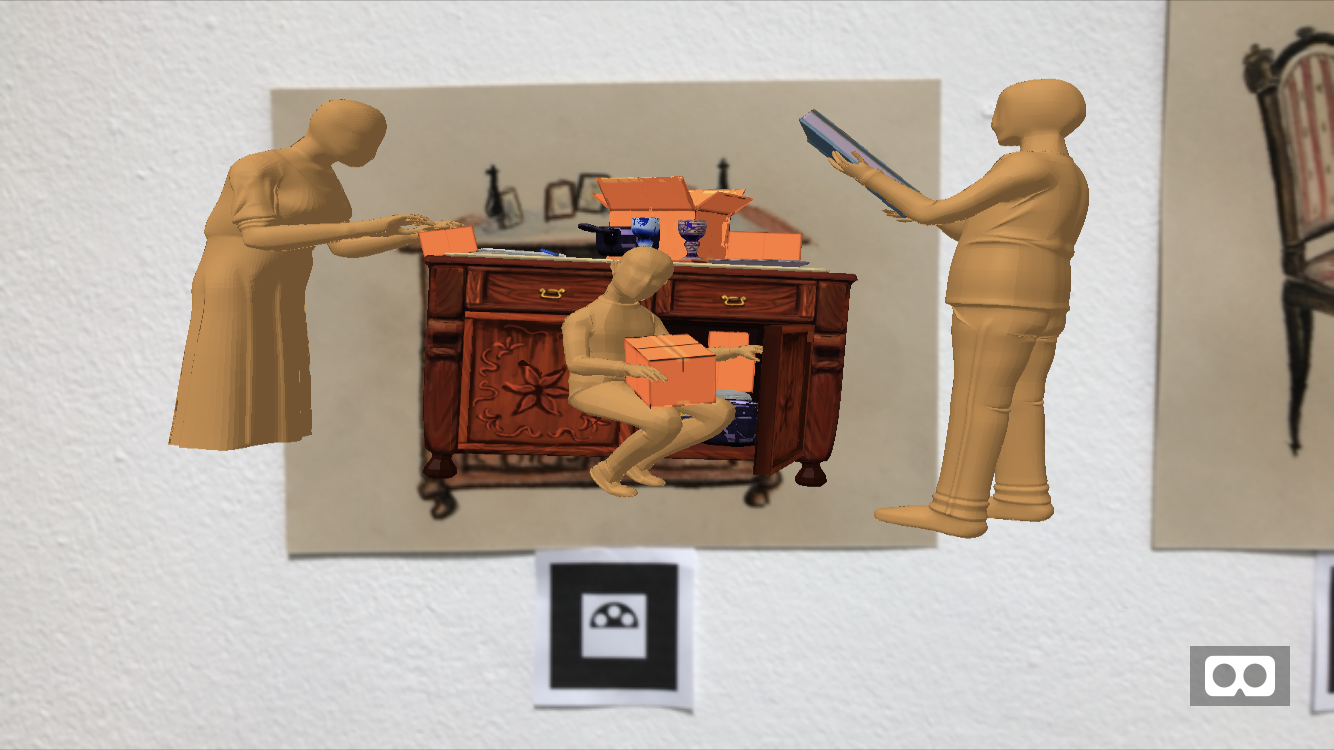Spring Cleaning and Kosher

To return to the main page click here.
Target:
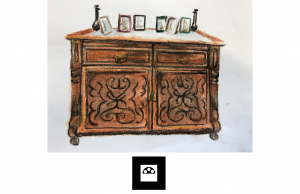
Pesach (1) (or Passover) is a 7 (or 8) (2) day long celebration in Spring time that is part of a trio of jewish holidays (3) that in ancient times involved a pilgrimage to the Temple in Jerusalem. Since the destruction of the second Temple in 70 CE people focus on different aspects, including a ritual meal (4) (the seder) in the community/family.
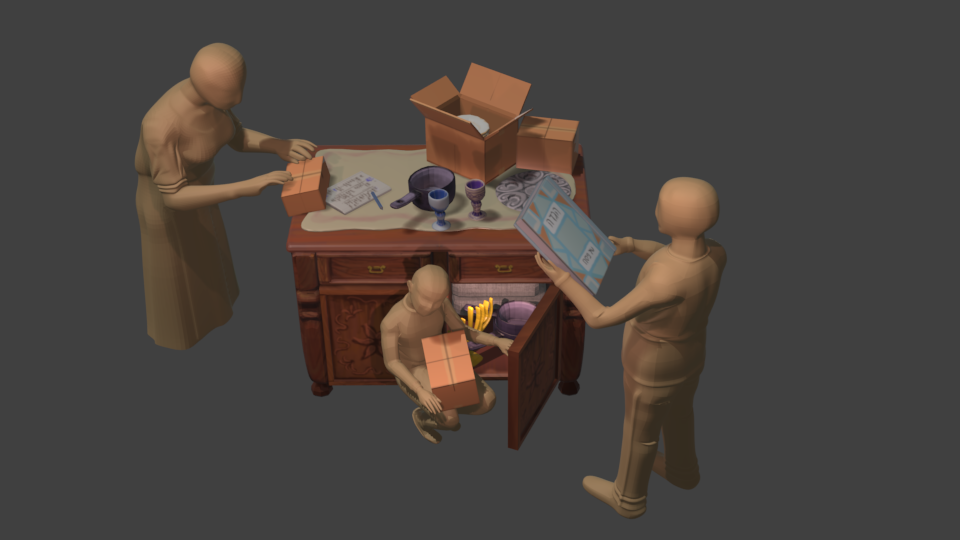
The holiday is meant to remind of the Exodus, the escape of the Israelites from Egypt by the workings of God and lead by Moses and Aaron. It refers to the fight against Pharao, the ten plagues upon Egypt, escape through the Reed Sea and the migration through the desert.
The preparations for this week are intense, in some very observant families they may begin a month in advance. The most time consuming element is that there are special kosher expectations for Pesach: All leavened products must be removed from the house (5) and they may not be eaten or used in other ways by observant jewish folks.
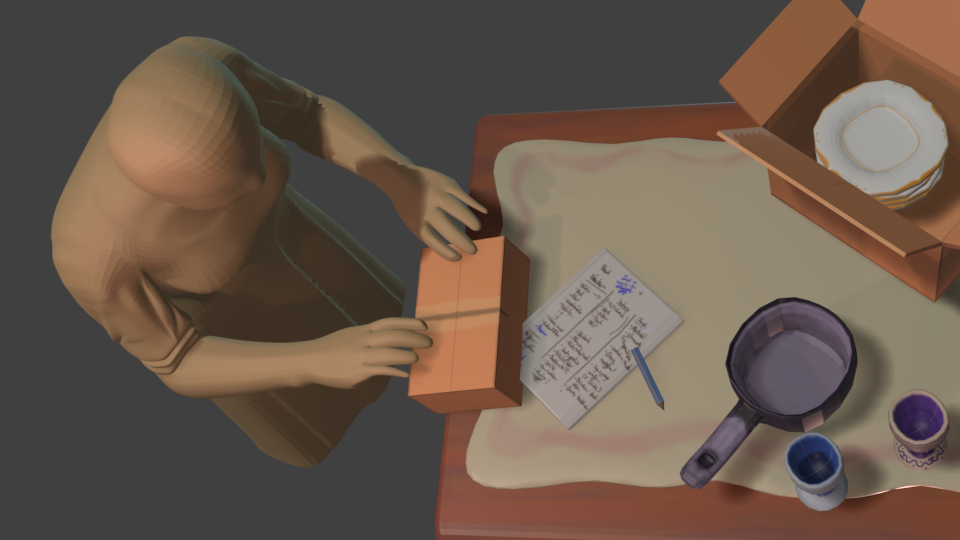
Kashrut (6)
Judaism has rules regarding purity and includes regulations for what may be consumed (8). The rules can be very restrictive when observed to their extremes. Every individual, family and congregation will have slightly different standards for how to ensure their preferred level of observance.
During Pesach the rules gain the addition of leavened products. But since they are permitted for the rest of the year, removing the leavened products involves a big spring cleaning effort. Families, especially ones with younger children may make a traditional treasure hunt (9) out of finding and getting rid of the last traces of crumbs.
Some families have separate dishes or even pots and cooking utensils (10), which have not touched leavened products or were koshered for the time period of Pesach. This is the case with the family in the scene. They can be seen unpacking boxes of pots and plates that were stowed away the year before.
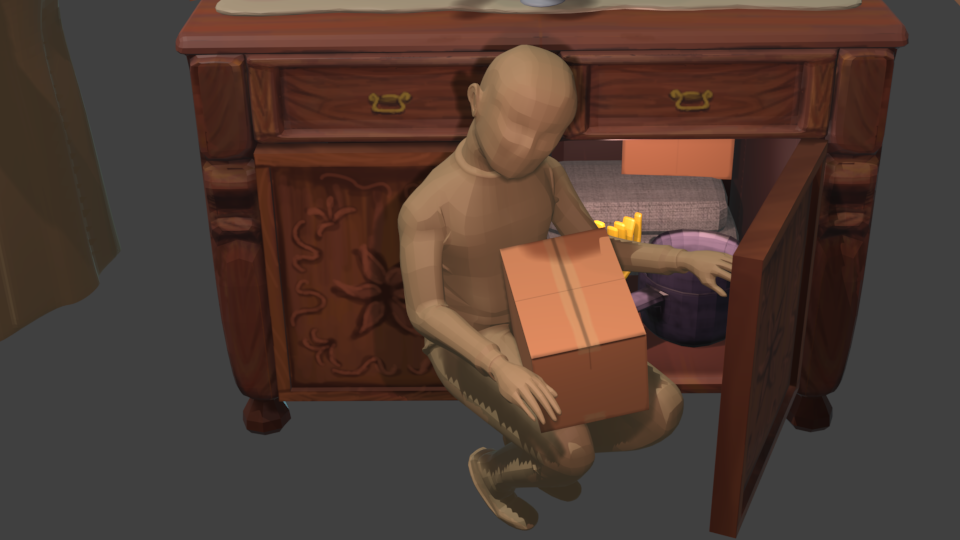
Seder (11)
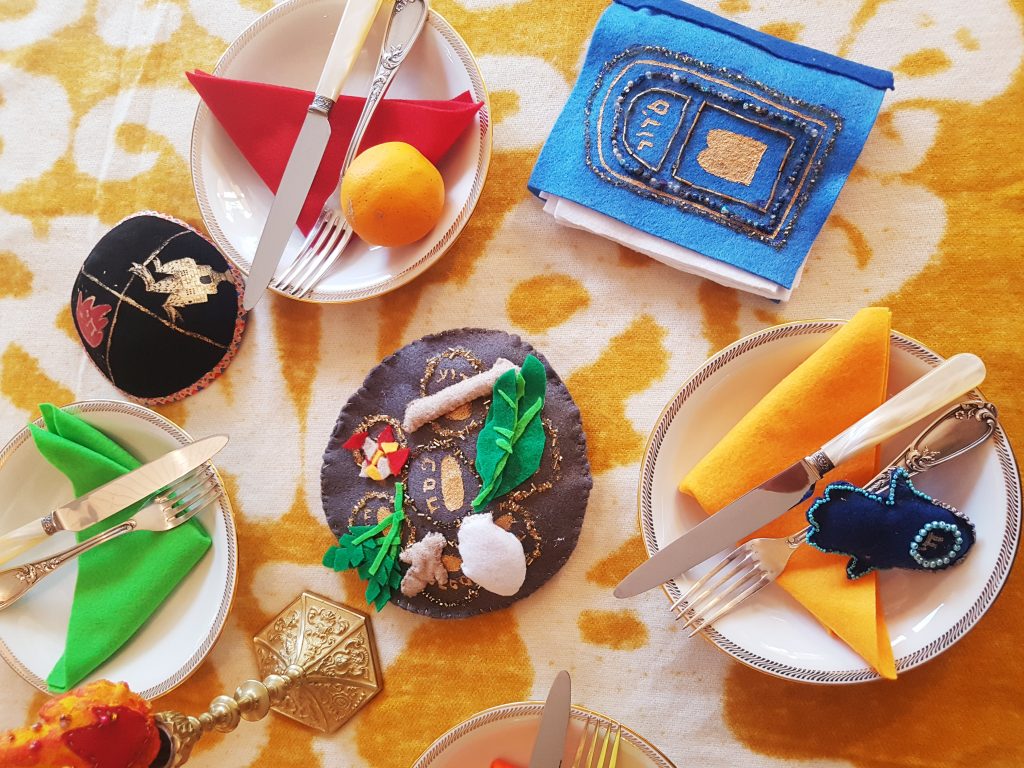
–
by Ariel Galimard
The ritual meal on the first day of Pesach, the seder, involves the metal plate with multiple divots. It is called a seder plate (12) and holds six ritual food items that each have their own meanings and order of being consumed. They serve a mostly symbolic function.
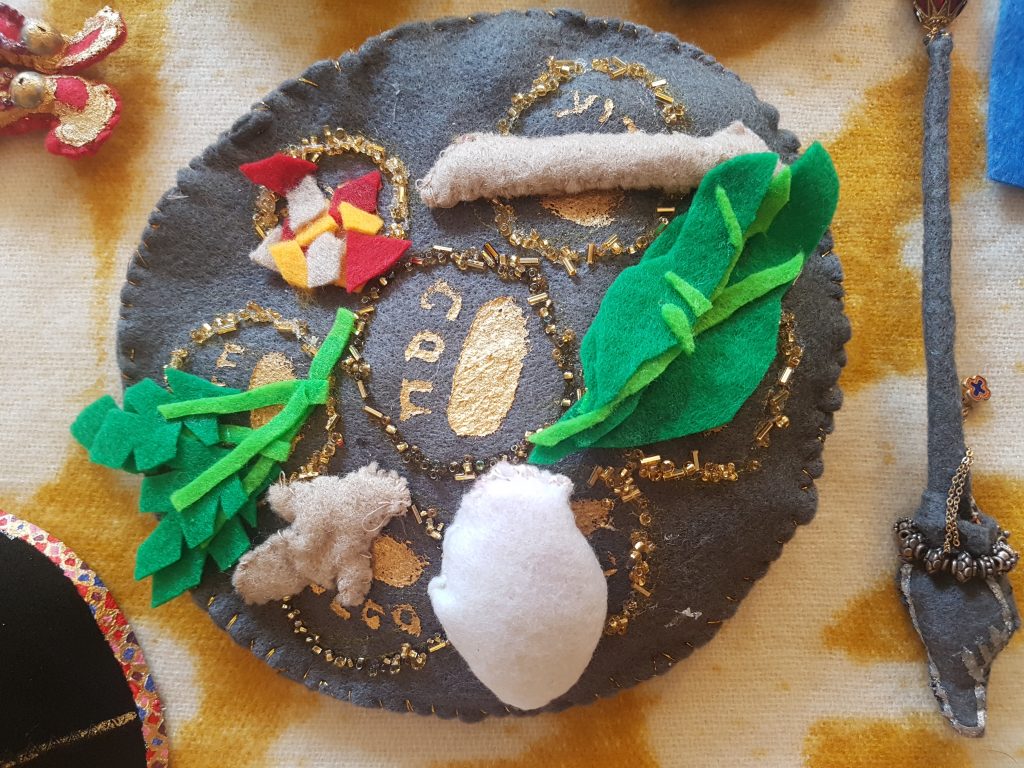
–
by Ariel Galimard
The father in the meantime is holding a large book: the Haggadah (13).
Inside this book are instructions and texts that lead participants through the Seder meal, going step by step and teaching about the Exodus. There are very many Haggadot with different focuses and contents.
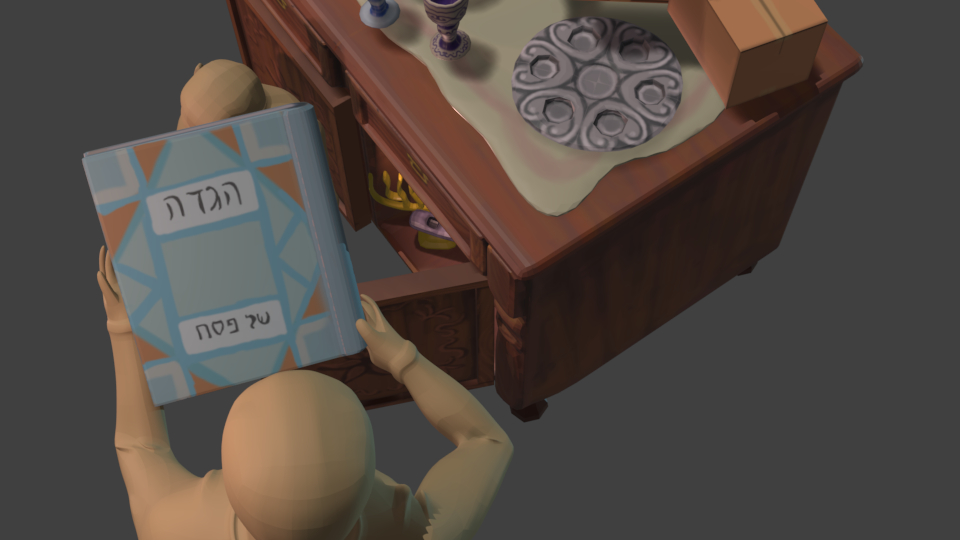
Links:
- https://www.myjewishlearning.com/article/passover-pesach-101/
- http://www.sinai-temple.org/passover/length.php
- https://en.wikipedia.org/wiki/Three_Pilgrimage_Festivals
- https://www.chabad.org/holidays/passover/pesach_cdo/aid/1751/jewish/What-Is-a-Seder.htm
- https://www.sefaria.org/Exodus.12.15?lang=en&with=all&lang2=en
- https://en.wikipedia.org/wiki/Kashrut
- http://www.koshercertification.org.uk/whatdoe.html
- https://www.myjewishlearning.com/article/kosher-food/
- https://www.chabad.org/holidays/passover/pesach_cdo/aid/117217/jewish/Search-for-Chametz.htm
- https://www.myjewishlearning.com/article/making-utensils-passover-ready/
- https://www.myjewishlearning.com/article/the-passover-pesach-seder/
- https://en.wikipedia.org/wiki/Passover_Seder_plate
- https://www.myjewishlearning.com/article/the-haggadah/
